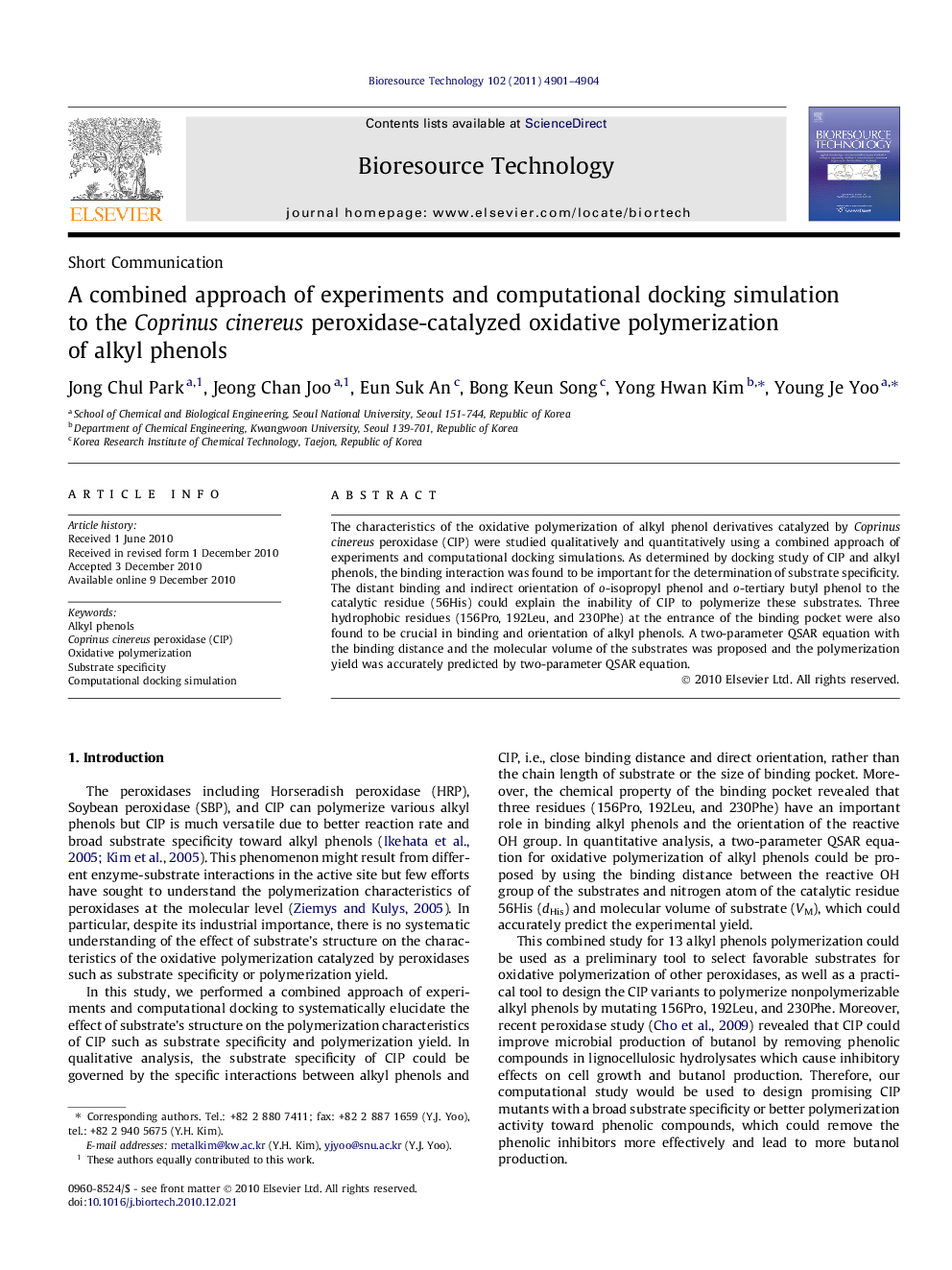| Article ID | Journal | Published Year | Pages | File Type |
|---|---|---|---|---|
| 10395219 | Bioresource Technology | 2011 | 4 Pages |
Abstract
The characteristics of the oxidative polymerization of alkyl phenol derivatives catalyzed by Coprinus cinereus peroxidase (CIP) were studied qualitatively and quantitatively using a combined approach of experiments and computational docking simulations. As determined by docking study of CIP and alkyl phenols, the binding interaction was found to be important for the determination of substrate specificity. The distant binding and indirect orientation of o-isopropyl phenol and o-tertiary butyl phenol to the catalytic residue (56His) could explain the inability of CIP to polymerize these substrates. Three hydrophobic residues (156Pro, 192Leu, and 230Phe) at the entrance of the binding pocket were also found to be crucial in binding and orientation of alkyl phenols. A two-parameter QSAR equation with the binding distance and the molecular volume of the substrates was proposed and the polymerization yield was accurately predicted by two-parameter QSAR equation.
Related Topics
Physical Sciences and Engineering
Chemical Engineering
Process Chemistry and Technology
Authors
Jong Chul Park, Jeong Chan Joo, Eun Suk An, Bong Keun Song, Yong Hwan Kim, Young Je Yoo,
